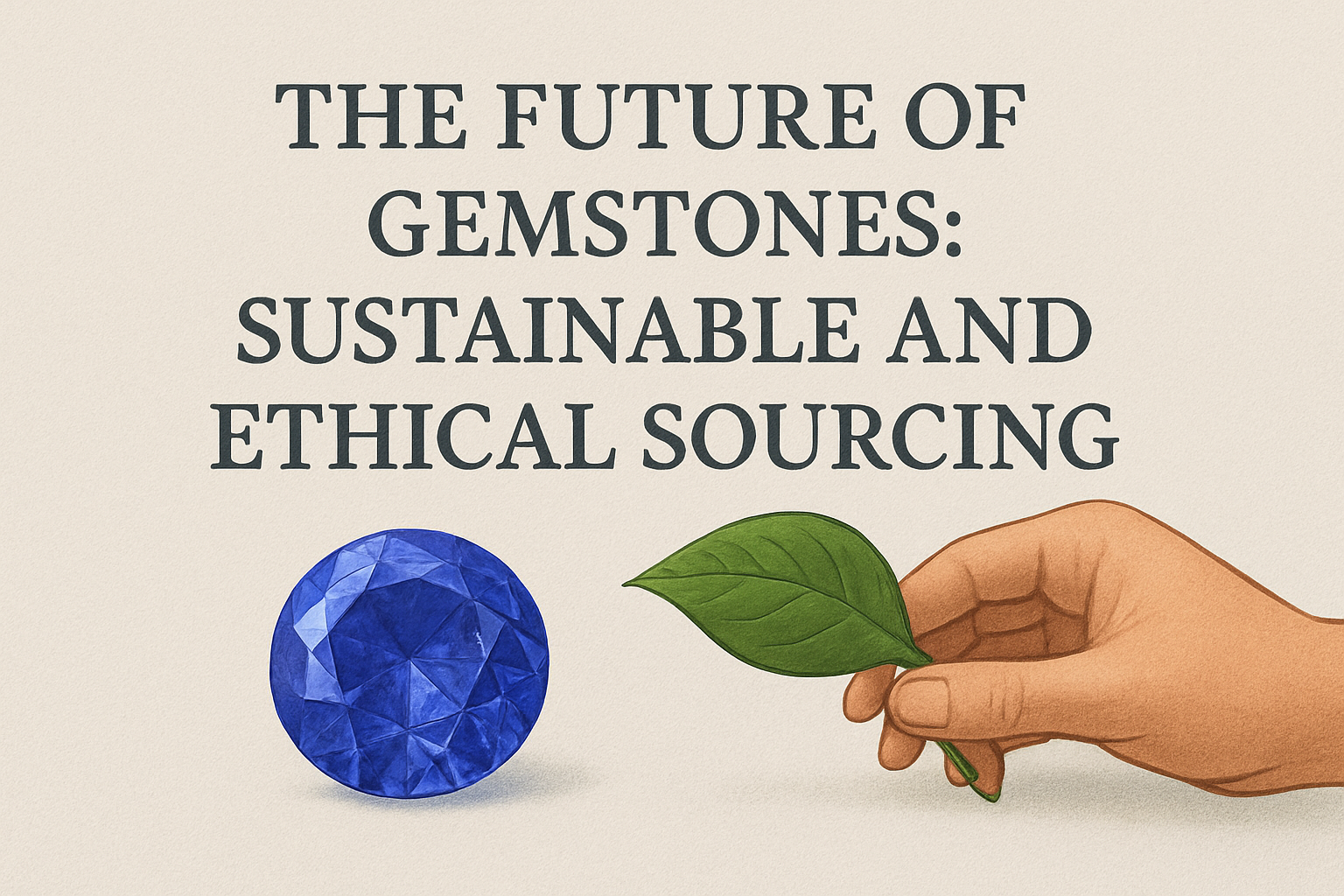For centuries, gemstones have symbolized beauty, power, and spiritual energy. Yet, behind the brilliance of every diamond, emerald, or sapphire lies a reality often overlooked — how these gemstones are sourced.
As awareness grows among conscious consumers, sustainability and ethics are becoming the new luxury standards in the gemstone industry. The question is no longer just “How beautiful is this stone?” but also “Where did it come from, and how was it mined?”
Welcome to the future of gemstones – where transparency, responsibility, and innovation shine brighter than ever before.
Table of Contents
🌍 1. The Dark Side of Traditional Gemstone Mining
Traditional gemstone mining, while vital to economies worldwide, has historically been linked with several ethical and environmental concerns:
- Unsafe working conditions for miners
- Child labor and exploitation in informal mines
- Environmental degradation, including deforestation and water pollution
- Lack of transparency in gem origins and trade routes
These issues not only damage ecosystems but also erode consumer trust. In today’s world, buyers want gemstones that tell a story of integrity, not exploitation.
♻️ 2. What Is Ethical and Sustainable Sourcing?
Sustainable and ethical gemstone sourcing ensures that every step of the process – from extraction to certification — prioritizes people, planet, and transparency.
This involves:
✅ Fair Labor Practices: Ensuring miners receive fair wages, safe working conditions, and no involvement of child labor.
✅ Environmental Responsibility: Minimizing ecological damage through regulated mining and land restoration.
✅ Traceability: Documenting each gemstone’s journey from mine to market using advanced technology.
✅ Community Empowerment: Supporting local economies and reinvesting in mining communities.
The result is a gemstone that doesn’t just shine on the surface – it shines with purpose and conscience.

🧭 3. Traceability: The Core of Ethical Gemstones
Transparency starts with traceability – knowing exactly where a gemstone comes from.
New technologies now make it possible to track gemstones through every stage of their journey.
🔗 Blockchain Technology
Blockchain creates an immutable digital record for every gemstone, documenting its origin, certification, and ownership history.
Luxury brands like De Beers’ Tracr and Everledger are pioneering blockchain systems that make gemstone fraud and unethical sourcing almost impossible.
🧬 Scientific Fingerprinting
Labs now use spectroscopy and chemical fingerprinting to identify a gemstone’s geographical origin. This helps verify claims of ethical sourcing and combat “conflict stones.”
💎 4. The Rise of Lab-Grown Gemstones
One of the biggest innovations shaping the future of ethical gemstones is the rise of lab-grown diamonds and gemstones.
Lab-grown stones are chemically and physically identical to natural ones – but without the environmental and ethical costs of mining.
- They use up to 80% less energy than traditional mining.
- They leave zero ecological scars on landscapes.
- They guarantee conflict-free origins.
Major jewelers and consumers alike are embracing lab-grown gems as a modern, sustainable alternative that combines beauty, purity, and responsibility.
🏗️ 5. Responsible Mining Initiatives Around the World
Ethical mining doesn’t mean stopping mining altogether – it means doing it right.
Organizations such as:
- The Responsible Jewellery Council (RJC)
- Fairmined and Fairtrade Gold initiatives
- Alliance for Responsible Mining (ARM)
…are leading efforts to ensure gemstone extraction supports both workers and ecosystems.
In regions like Tanzania, Madagascar, and Sri Lanka, small-scale mines are being trained to follow eco-friendly and transparent practices that protect biodiversity and improve livelihoods.
🌱 6. Consumer Awareness Is Driving Change
The power to transform the gemstone industry now lies with informed consumers.
Today’s buyers – especially millennials and Gen Z – value ethics as much as aesthetics. They are:
- Asking for certified origin reports
- Preferring eco-conscious brands
- Willing to pay more for traceable, conflict-free gems
This shift in mindset is encouraging more brands to adopt sustainability as a selling point, not a side note.
💼 7. Brands Leading the Way in Sustainable Gemstones
Several forward-thinking jewelry houses are already embracing this ethical revolution:
- Chopard sources all its gemstones through fair-trade and responsible channels.
- Brilliant Earth and Miadonna specialize in lab-grown and ethically sourced diamonds.
- Tiffany & Co. publicly discloses its gemstone supply chain and supports responsible mining.
These brands prove that luxury and responsibility can coexist – beautifully.
🔮 8. The Future: Transparent, Tech-Driven, and Conscious
In the coming decade, every gemstone will carry a story of sustainability.
Expect to see:
✨ QR-coded gemstones for instant origin tracking
✨ AI-powered grading for unbiased certification
✨ Fully carbon-neutral gem production
✨ Transparent pricing linked to ethical sourcing standards
Gemology is entering an era where ethics are as valuable as brilliance.
💎 Conclusion: Beauty with Integrity
The future of gemstones isn’t just about sparkle – it’s about sincerity, sustainability, and social impact.
Every ethically sourced gemstone represents not just nature’s artistry, but also humanity’s responsibility to protect it.
As the industry evolves, one thing is clear:
The true value of a gemstone lies not only in its rarity, but in the purity of its story.